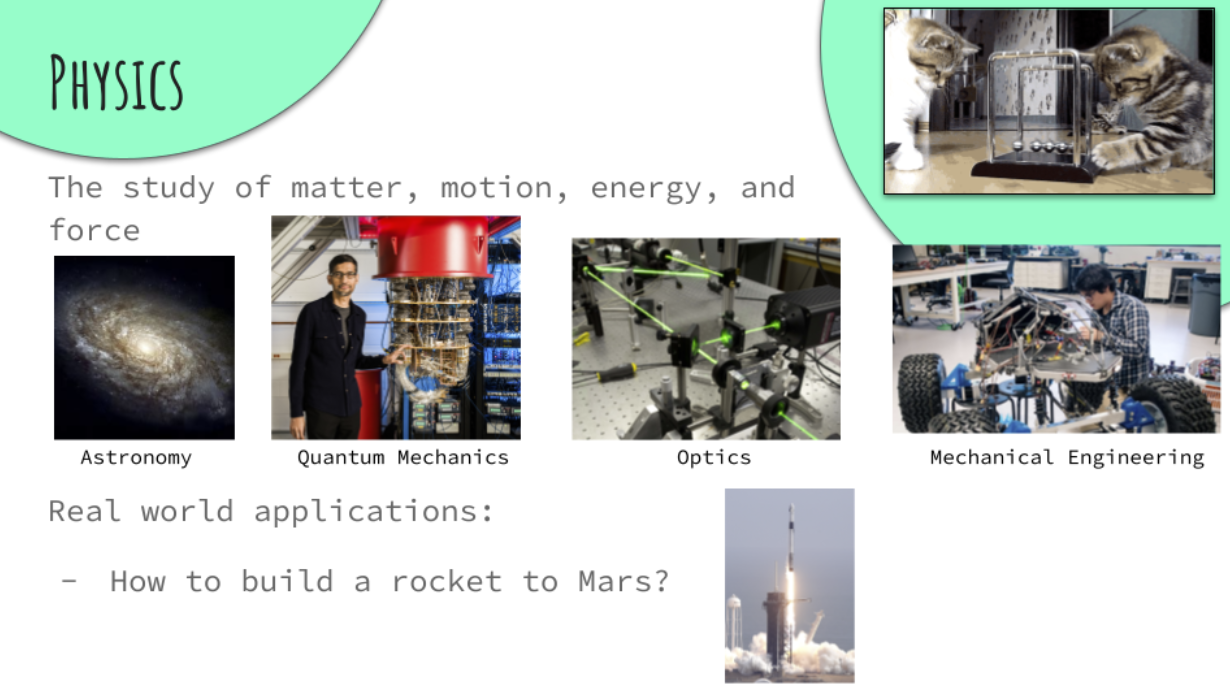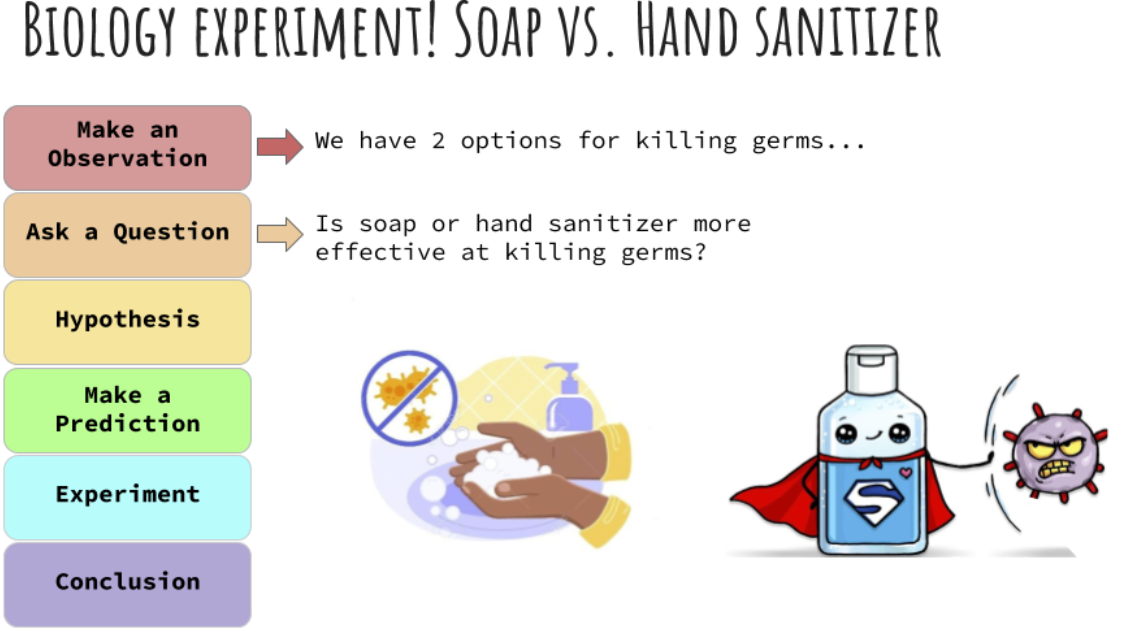11.09.2020
Experiment Leaders: Liz Gacek and Joe Vallin
On November 9 and 13, 2020 students from Ben Winter’s 7th and 8th-grade class and Holly Siasoco’s 6th-grade class at Marcy Open Elementary met virtually with Science for All graduate students in the first meeting of what promises to be a unique year for Marcy Science for All in the midst of a pandemic. As a way to introduce our program to the students, the topic for this first meeting was, “What is it like to be a Scientist?”. Students were brought through an interactive virtual presentation where they learned about the exciting, wide-ranging fields of science and how scientists apply the scientific method to the world's puzzling questions.
The meeting started with a brief overview of the three main fields of science: Biology, Chemistry, and Physics. Students were introduced to some exciting new scientific technologies, from mind-controlled robotic limbs to super-fast quantum computers, and learned about some of the diverse scientists that are making groundbreaking discoveries in each field. After reviewing the scientific method, the students got to dive deeper into a science field of their choice by joining a Physics, Biology, or Chemistry breakout room where an SFA grad student walked them through more specific details of the field. In each breakout room, the student’s got to watch a short interview of a University of Minnesota scientist that worked in the respective field (Thanks to our scientists for volunteering their time for the interview: Gerardo Rodriguez (Biology), Prof. James Leger (Physics), and Prof. Michelle Calabrese (Chemistry)). Here the students learned about what kind of questions these scientists ask in their research, and what motivated them to choose their career. Finally, each breakout room showed a science demonstration related to their field, where students got a chance to put their knowledge of the scientific method to the test by generating hypotheses, drawing conclusions, and making predictions for future experiments. Biology breakout rooms got to learn about bacterial growth and how effective hand sanitizer is against killing germs versus normal hand-washing. Physics breakout rooms watched a demonstration on how a fidget spinner works and the “gravity-defying” effects of rotational inertia. Lastly, chemistry breakout rooms watched how combining vinegar and baking soda creates a chemical reaction capable of inflating a balloon with carbon dioxide.
The goal for this first meeting was to expose the students to the exciting breadth of scientific disciplines that are available, and allow them to actively pursue learning more about a discipline that interested them. We also laid the groundwork for a knowledge of the scientific method, which will be used in our future meetings with the students.

